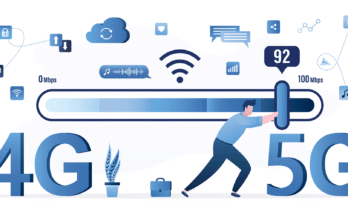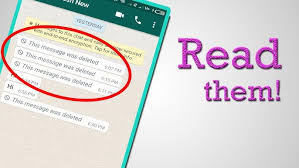In today’s digital age, creativity is being enhanced by artificial intelligence (AI) in ways never before imagined. One of the most fascinating advancements is AI tools that can take a simple script and transform it into a full-fledged story. For writers, creators, and storytellers, this is a game-changer, as it provides an efficient and imaginative way to breathe life into their concepts. In this blog, we’ll explore how AI tools are revolutionizing script-to-story generation and what this means for the future of creative writing.
What Is Script-to-Story AI?
A script-to-story AI tool is designed to take a written script, typically a brief or a sequence of dialogues and action lines, and generate a narrative from it. These AI-powered systems can analyze the script’s structure, context, and style to build a coherent and often vivid story, complete with character development, descriptive elements, and even emotions. This automation saves time for writers and provides a new platform for creators to brainstorm and test ideas.
How Does It Work?
The underlying technology of script-to-story AI is based on Natural Language Processing (NLP) and Machine Learning (ML). Here’s a step-by-step breakdown of how these tools typically work:
- Input: The user provides a script or screenplay, which may include a list of scenes, character dialogue, and brief descriptions.
- Context Analysis: The AI analyzes the script to understand the context, character motivations, and key plot points. It identifies the central theme and tone of the story.
- Character Development: Based on the information given in the script, the AI can develop characters, fleshing out their backgrounds, personalities, and interactions within the story.
- Story Generation: The AI generates a detailed story, adding descriptive elements, creating transitions between scenes, and enhancing the narrative. It can also tailor the story’s length, mood, and pacing to suit different genres or styles.
- Editing and Refining: Many AI tools allow for post-generation editing, giving writers the flexibility to tweak the narrative, refine character arcs, or adjust the flow of the story to match their creative vision.
Popular AI Tools for Script-to-Story Generation
Several AI-powered platforms are making waves in the creative writing community by offering script-to-story generation features. Here are a few worth exploring:
- ChatGPT (by OpenAI): While primarily known as a conversational model, ChatGPT can analyze brief scripts and expand them into detailed narratives. With its deep language comprehension and writing capabilities, it’s a versatile tool for writers and storytellers.
- Plotagon: Plotagon transforms scripts into animated stories, but it also has features that allow for script-to-story expansion. Writers can input text and receive a comprehensive narrative that fits various genres, including comedy, drama, or thriller.
- StoryLab AI: StoryLab AI specializes in helping creators turn ideas into fully fleshed-out stories. Its script-to-story feature analyzes dialogues and short scripts to craft detailed storylines with character development and emotional depth.
- Jasper AI: Jasper AI is a popular tool for content creators and authors, offering various templates to create long-form content. Its story generator can take scripts or rough outlines and transform them into captivating stories tailored to different writing needs.
- Artbreeder (for visual storytelling): Although focused on visual story creation, Artbreeder also supports narrative AI functions that blend both story writing and visual content generation, turning simple ideas into dynamic stories accompanied by AI-generated art.
Benefits of Using AI for Story Generation
- Time Efficiency: AI can generate a complete story in a fraction of the time it would take a human writer. This is a huge advantage for creators who need to produce content quickly, such as for television series, advertisements, or social media campaigns.
- Creativity Enhancement: While AI is not yet a replacement for human creativity, it can help enhance the creative process by offering new perspectives and ideas. By analyzing the script, AI tools can suggest plot twists, emotional depth, and character arcs that the writer may not have considered.
- Cost-Effective: For small teams or independent creators, AI can be a cost-effective way to generate stories without hiring a large team of writers. This opens doors for indie filmmakers, game developers, and content creators to experiment with storytelling.
- Overcoming Writer’s Block: One of the biggest struggles for writers is the infamous “writer’s block.” AI-powered story generators can provide suggestions or full narratives, helping writers break through creative roadblocks.
- Personalization: AI tools can tailor stories based on user inputs such as genre preferences, tone, or length. This allows creators to generate stories that match their vision while still providing room for customization.
Challenges and Limitations
While AI tools for script-to-story generation are impressive, they are not without limitations. Here are some of the challenges users might face:
- Lack of Emotional Depth: While AI can mimic human language and structure, it may still struggle to capture deep emotional subtleties or the nuances of complex human relationships. This can make AI-generated stories feel mechanical or predictable at times.
- Originality Concerns: AI tools generate stories based on patterns and existing data, which means they can sometimes produce outputs that feel formulaic or repetitive. Original and creative plots still rely heavily on human intervention.
- Ethical Considerations: As AI takes on more creative roles, there are ongoing discussions about authorship and intellectual property. Who owns the story if it was generated by an AI? How do we ensure that AI doesn’t plagiarize or replicate existing works too closely?
The Future of Script-to-Story AI Tools
AI is rapidly transforming the landscape of creative writing and storytelling. As the technology improves, we can expect even more sophisticated tools capable of generating not just stories but also fully realized novels, screenplays, and even interactive content such as video games or virtual reality experiences.
Writers and creators will continue to use AI as a collaborative partner rather than a replacement, allowing them to focus on refining ideas and pushing the boundaries of storytelling. The fusion of human creativity with AI efficiency holds endless potential, ensuring that the future of storytelling is dynamic, innovative, and inclusive.
Conclusion
AI-powered script-to-story tools are ushering in a new era of creative writing. By automating the process of turning a simple script into a compelling story, these tools are empowering writers, filmmakers, and content creators to focus on the art of storytelling rather than the mechanics. While AI cannot replace the unique voice of a human writer, it provides a powerful resource that can enhance creativity, overcome writer’s block, and generate content more efficiently.
As technology evolves, so too will the ways we tell stories, and AI will undoubtedly play a vital role in shaping the future of narrative creation.
What are your thoughts on AI in storytelling? Have you tried an



